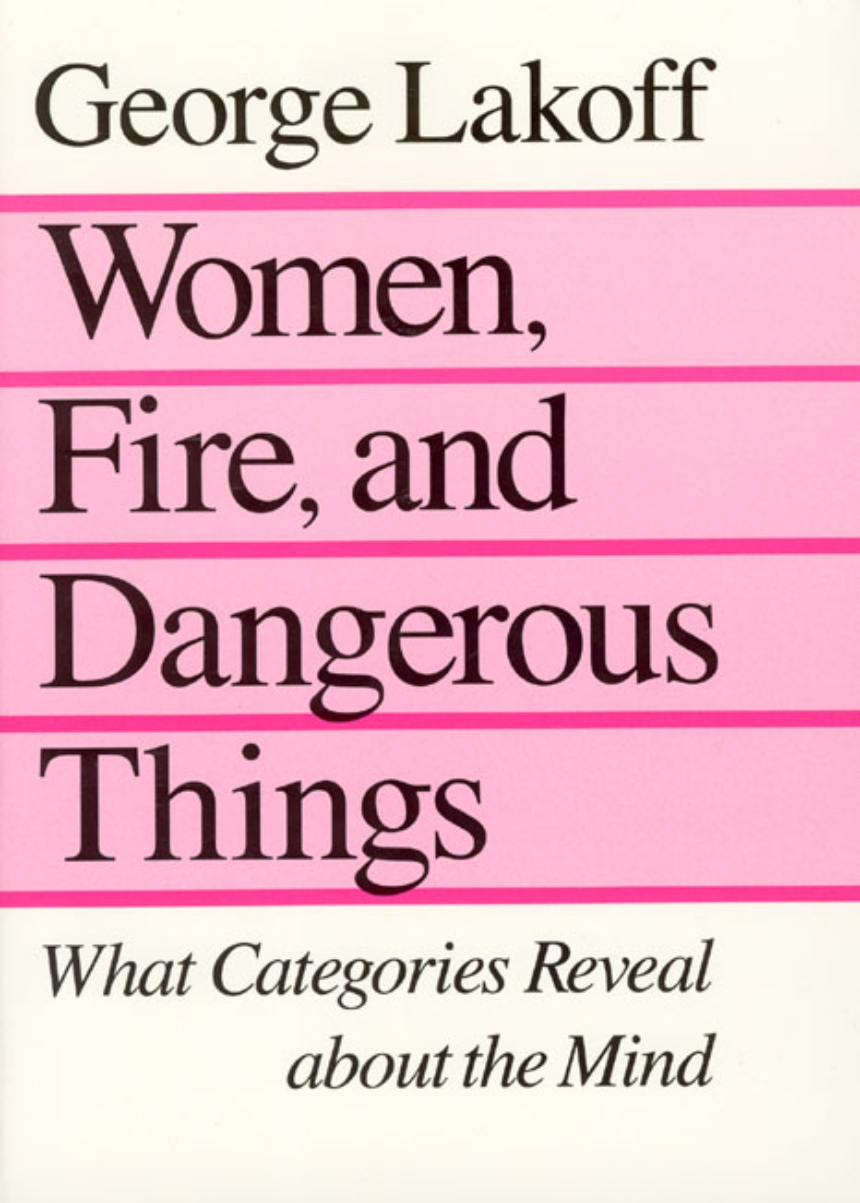Women, Fire, and Dangerous Things
What Categories Reveal about the Mind
The groundbreaking work that Language journal said no linguist could afford to neglect
In Women, Fire, and Dangerous Things, George M. Lakoff takes on the classical theory of categorization, which argues that the classes into which our minds and language group things and people are clearly defined and have strict boundaries. Lakoff argues instead that the mind and language build categories around protoypical examples, and that categories then radiate out from those central types. The book argues for embodied cognition and makes a powerful case that meaning cannot be reduced to abstract symbols or removed from the physical experiences of human perception.
In Women, Fire, and Dangerous Things, George M. Lakoff takes on the classical theory of categorization, which argues that the classes into which our minds and language group things and people are clearly defined and have strict boundaries. Lakoff argues instead that the mind and language build categories around protoypical examples, and that categories then radiate out from those central types. The book argues for embodied cognition and makes a powerful case that meaning cannot be reduced to abstract symbols or removed from the physical experiences of human perception.
632 pages | 32 line drawings | 6-1/2 x 9-1/2 | © 1987
Cognitive Science: Language
Language and Linguistics: General Language and Linguistics, Philosophy of Language
Philosophy: Philosophy of Mind
Reviews
Table of Contents
Acknowledgments
Preface
Book I: The Mind beyond the Machine
Part I: Categories and Cognitive Models
1. The Importance of Categorization
2. From Wittgenstein to Rosch
3. Prototype Effects in Language
4. Idealized Cognitive Models
5. Metonymic Models
6. Radical Categories
7. Features, Stereotypes, and Defaults
8. More about Cognitive Models
9. Defenders of the Classical View
10. Review
Part II: Philosophical Implications
11. The Objectivist Paradigm
12. What’s Wrong with Objectivist Metaphysics
13. What’s Wrong with Objectivist Cognition
14. The Formalist Enterprise
15. Putnam’s Theorem
16. A New Realism
17. Cognitive Semantics
18. Whorf and Relativism
19. The Mind-As-Machine Paradigm
20. Mathematics as a Cognitive Activity
21. Overview
Book II: Case Studies
Introduction
1. Anger
2. Over
3. There-Constructions
Afterword
References
Name Index
Subject Index
Preface
Book I: The Mind beyond the Machine
Part I: Categories and Cognitive Models
1. The Importance of Categorization
2. From Wittgenstein to Rosch
3. Prototype Effects in Language
4. Idealized Cognitive Models
5. Metonymic Models
6. Radical Categories
7. Features, Stereotypes, and Defaults
8. More about Cognitive Models
9. Defenders of the Classical View
10. Review
Part II: Philosophical Implications
11. The Objectivist Paradigm
12. What’s Wrong with Objectivist Metaphysics
13. What’s Wrong with Objectivist Cognition
14. The Formalist Enterprise
15. Putnam’s Theorem
16. A New Realism
17. Cognitive Semantics
18. Whorf and Relativism
19. The Mind-As-Machine Paradigm
20. Mathematics as a Cognitive Activity
21. Overview
Book II: Case Studies
Introduction
1. Anger
2. Over
3. There-Constructions
Afterword
References
Name Index
Subject Index
